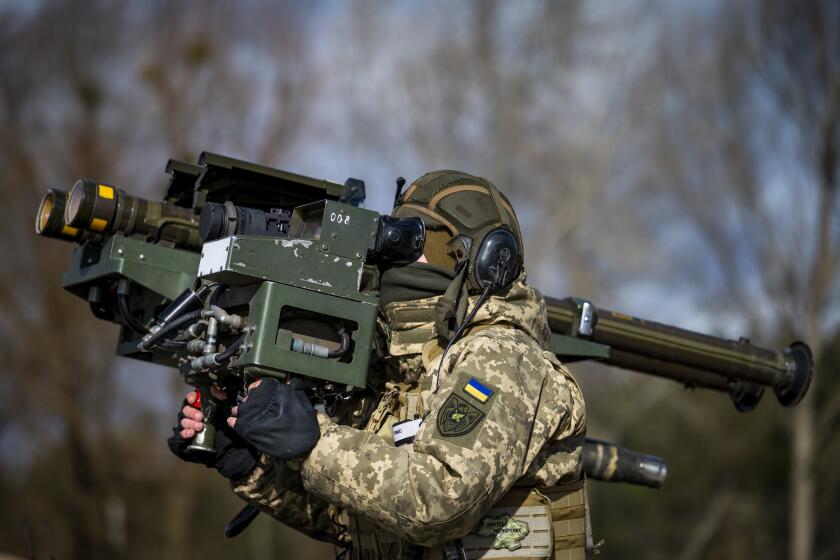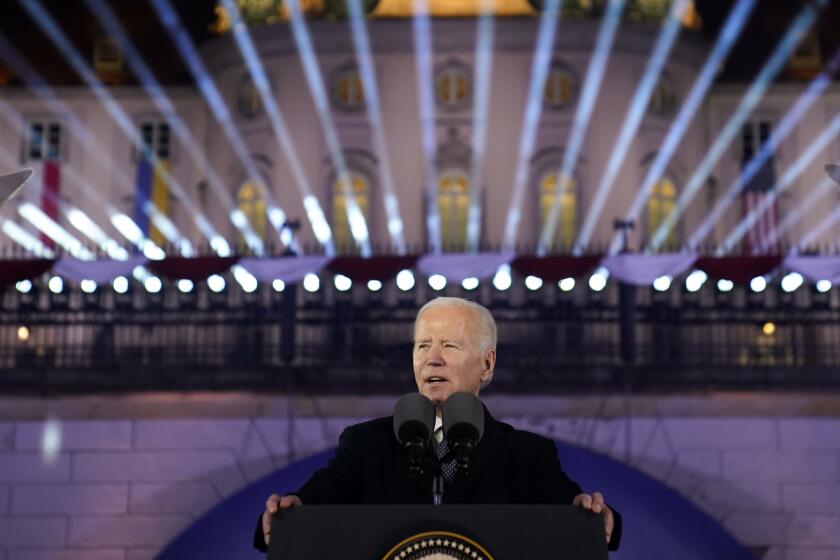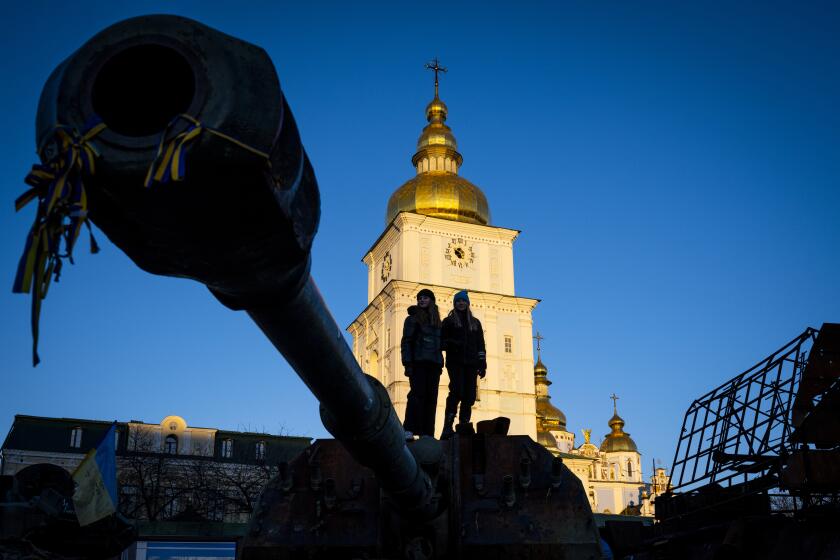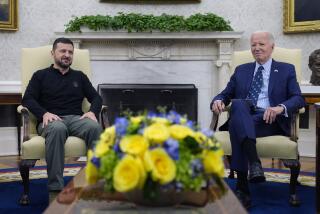For donors, wartime Ukraine aid creates blurry ethical line
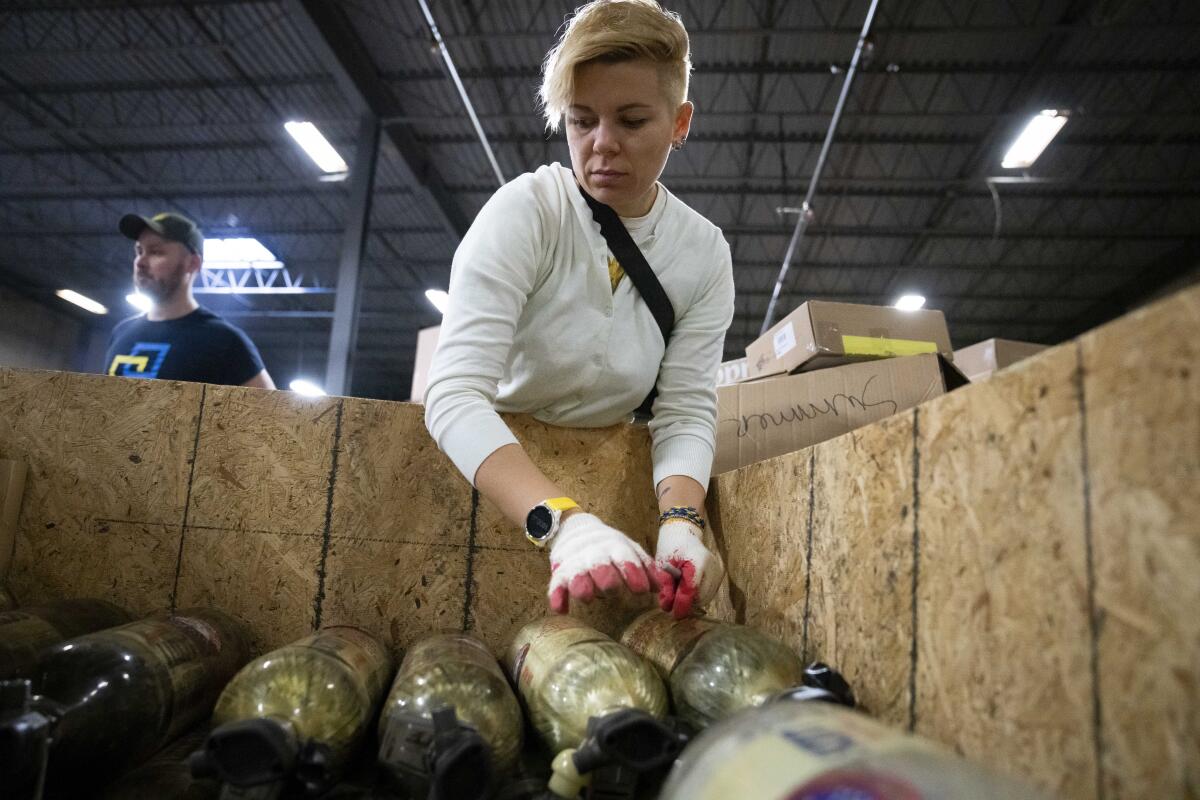
NEW YORK — Bulletproof vests and drones. Pickup trucks, walkie-talkies and tourniquets. These are just some of the items that individuals and nonprofits have donated to buy and ship to Ukraine, where sometimes they are then used by those fighting Russia’s invasion.
“We’ve had these discussions countless times,” said Igor Markov, a director of the nonprofit Nova Ukraine, about where to draw the line between what aid is humanitarian versus that which supports the active defense — the fighting — in his home country.
His Stanford-based organization, which has delivered some $59 million in aid to Ukraine since Russia invaded a year ago, decided ultimately not to support volunteer fighters.
“We realized there’s a significant amount of money that would be ruled out,” he said, pointing to platforms that facilitate matching employee donations, like Benevity, and some companies, like Google, that require nonprofits to promise their aid does not support active fighting as a condition of receiving contributions.
Throughout the last year, U.S. and European companies, individuals and organizations have navigated local and international regulations to provide aid and have grappled with similar moral questions about whether to donate to an allied nation’s defense.
Markov said he contributed to buying equipment for Ukraine’s front-line defenders as an individual. And he points out that items like drones and pickup trucks may not usually be considered military equipment before asking, “Guess how they’re used?”
Attacks on infrastructure still pose a threat, but Ukraine has largely withstood Russia’s bid to plunge the country into the dark and cold of winter.
“It could be used to just carry food. It could be used to carry munitions,” he said of the vehicles, adding that Ukrainian fighters have been creative in using whatever equipment they have. Drones, meanwhile, have become an essential tool in the fighting.
Under U.S. laws, nonprofits are not allowed to donate to people in combat, said New York attorney Daniel Kurtz, a partner at Pryor Cashman.
“You can’t support war fighting, can’t support killing people, even if it’s killing the bad guys,” he said. “It’s not consistent with the law of charity.”
But Kurtz doubts the Internal Revenue Service will examine donations to Ukraine — in part for reasons of capacity, but also because of the political support for Ukraine’s government.
“While I’m sure some of them are carefully lawyered, there’s enormous pressure to provide this support,” he said of nonprofits. “So my guess is probably a lot of people are just going ahead and doing it.”
The reality, as described by some nonprofit leaders, is that everyone in Ukraine is fighting to defend the country, from children to an 80-year-old Holocaust survivor.
“We’re open,” said Dora Chomiak, president of Razom for Ukraine, a New York nonprofit that has seen the contributions it receives jump from around $200,000 a year to at least $75 million in 2022. “Our aid and our medical equipment and our communications equipment are going to people who are defending the country.”
President Biden delivered a forceful speech Tuesday in Poland ahead of the first anniversary of the Russian invasion of Ukraine.
Though it has delivered more than a thousand drones, her organization ruled out fundraising for military equipment because it did not fit into the organization’s charitable mission, said Chomiak. Getting the necessary licenses would also have delayed immediately impactful actions, such as delivering tens of thousands of specialized first-aid kits to the front lines.
Companies, which have given some of the largest publicly known donations to Ukraine, must also consider to what extent their donations are directly supporting Ukraine’s war effort. Microsoft Corp. has donated at least $430 million in services and cash in 2022, not including cybersecurity services.
Tom Burt, a Microsoft vice president, said he set up direct, encrypted communication channels with senior cybersecurity officials in Ukraine before the war began and continues to communicate with them regularly. At the start of the war, Microsoft helped move the Ukrainian government’s digital infrastructure from physical servers in the country into the cloud. The company also helps protect Ukrainian devices and software from Russian cyber intrusions and attacks that are often coordinated with physical military campaigns.
“It’s possible, of course, that some of those devices are being used by the military or by logistics organizations, both government and private sector, to provide both humanitarian aid and military supplies and equipment,” Burt told the Associated Press. “That’s not really our role to get engaged in that.”
While supporting the Ukrainian government, Microsoft has learned a great deal about malware used by Russian-aligned groups.
“That’s helping us build even more secure products and services,” Burt said. “But the fundamental reason that we’re doing this is because we think it’s the right thing to do.”
Microsoft has agreed to provide its services at no cost to Ukraine through 2023. But it’s possible Ukraine will turn into a paying customer when the war ends.
War wounds and traumatic captivity, cherry liqueur and air-raid alerts: Weathering the year-old Russian invasion
Dana Brakman Reiser, a professor at Brooklyn Law School who co-wrote a recent book about corporate giving, said many companies use philanthropic activity for business development, to market their brand or to motivate their employees.
“They’re saying, ‘This is philanthropic.’ And that’s a very subjective assessment. It may be largely philanthropic,” she said. “It may have some business development and benefit for the company, especially in a very long-term sense.”
Americans have previously fundraised or even fought in conflicts in which the U.S. government was not a party, said Andrew Morris, who teaches history at Union College. Before the U.S. entered World War II, Japanese Americans were among several immigrant groups that sent aid to their countries of origin, including packages directly to Japanese soldiers.
“It’s not guns, but it’s going directly to the military,” he said. “Is that a distinction without a difference?”
The U.S. government eventually saw such relief efforts as evidence of Japanese disloyalty when it incarcerated whole communities after the bombing of Pearl Harbor. But, it tolerated the work of another group that shipped weapons to Britain’s Home Guard, which was ill-equipped, despite the U.S. being formally neutral at the time, Morris said.
“I think that makes it a lot easier for this private sector, voluntary donations to flow in the direction that U.S. foreign policy is,” he said, though generally, the government discourages individuals from pursuing their own foreign policy objectives.
Greg Schneider, executive vice president of the Conference on Jewish Material Claims Against Germany, which supports around 10,000 Holocaust survivors in Ukraine, many of whom are now in their 80s and 90s, said it carefully tracks the food, water and medicine it has sent into the country since the war began.
“Most of the funding comes from the German government through us,” he said. “So, it’s very clear to us that it doesn’t cross over into any non-humanitarian efforts.”
More to Read
Sign up for Essential California
The most important California stories and recommendations in your inbox every morning.
You may occasionally receive promotional content from the Los Angeles Times.
